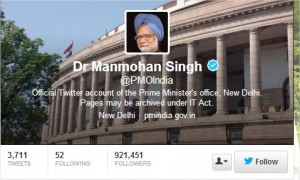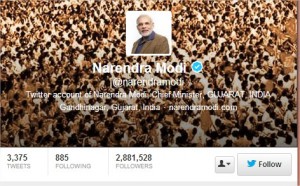In March 2013, India had an estimated population of 165 million internet users which surprisingly equals the number of television sets in the country which is considered as one of the most preferred mode of communication in the country.
65 million Indians are on Facebook whereas the numbers are close to 35 million on Twitter. In a country of 1.2 billion citizens, the online population may account for only 10%, but it is among the top three internet markets in the world.
With the general elections scheduled in 2014, the Indian politicians have gone online to connect the younger generation of the country. Gone are the days of a monologue through print media and television, social media has come out as an important platform amongst politicians for striking a conversation with the citizens of the country.
Owing to India’s large rural population, till now, the election campaigns in India were mainly focussed on public rallies, print, television or radio advertising, but with growing online population and cheaper options for the users to come online, the Indian politicians are giving a serious thought on designing their online election campaigns.
The top political parties have come out with a dedicated department for managing their social media presence and have spent a considerable amount of their marketing budget in such promotions. The prime ministerial candidate from opposition party Mr. Narendra Modi is one of the most active twitter user which shows up with around 3 million followers he has while the current prime minister of India Dr. Manmohan Singh is followed by only 1 million twitter users which is one-third when compared to Mr. Modi.
This directly relates to their popularity among the Indians. According to a survey carried out by a Indian daily Mr. Modi had 808,551 mentions on twitter as compared to Mr. Singh who had only 88,931. The sentiment analysis further proves the point.
Hence, Indian politicians cannot afford to ignore the online population which majorly consists of young generation and many first time voters. With elections around the corner, all the parties would choose to lure this huge vote bank by working on their social media strategies.



1 thought on “Social Media and The Indian Politics”